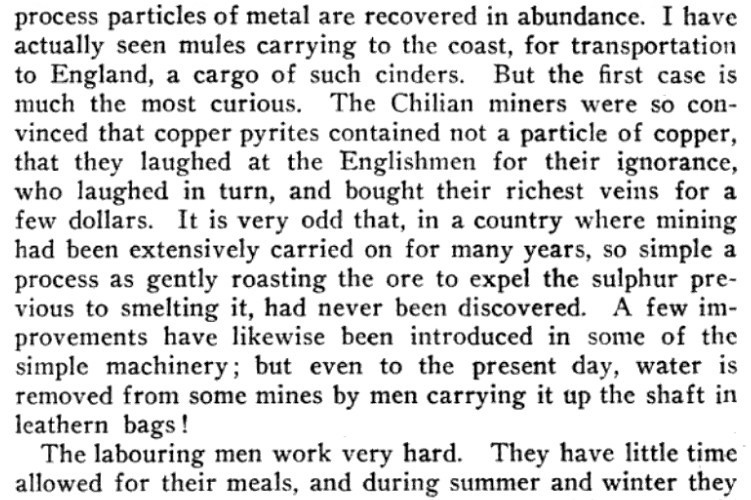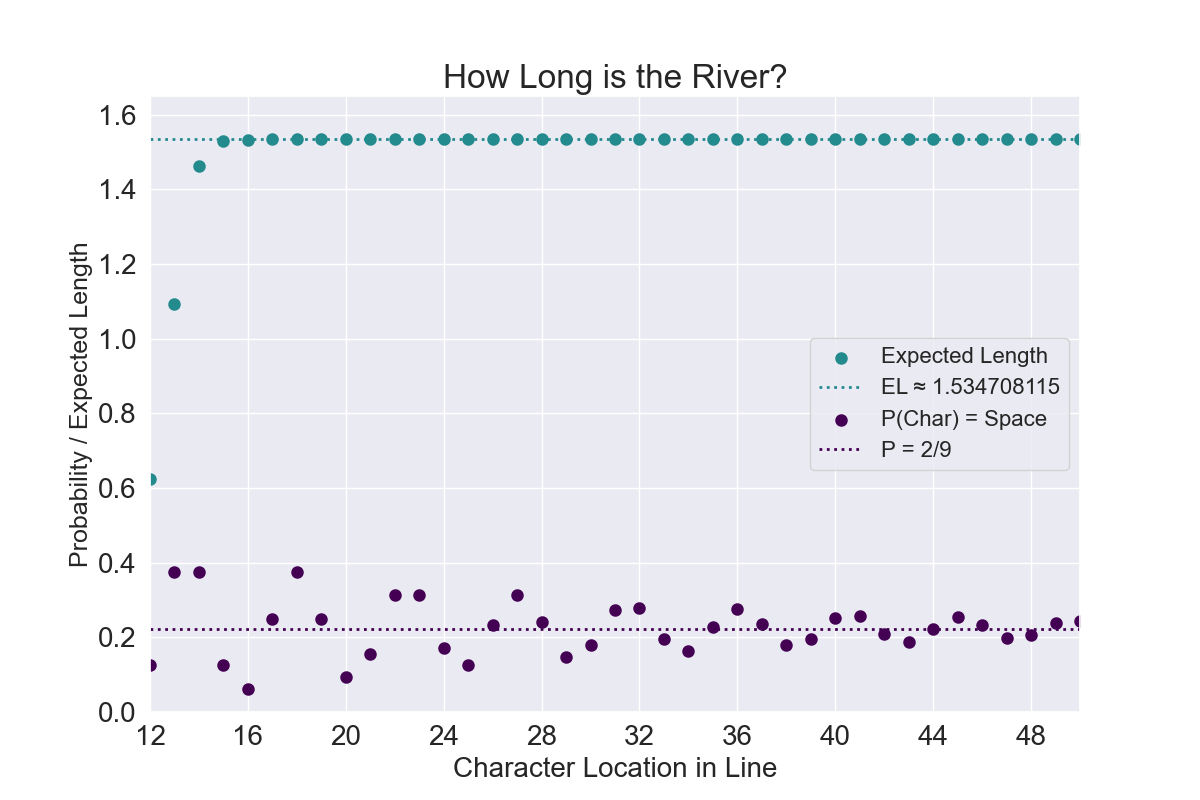How Long Is the River?¶
Fiddler¶
From Seth Cohen comes a puzzle that lines up neatly:
Seth recently came across a phenomenon known as a "river”, where spaces between words diagonally align from one line of text to the next. The following text has an 11-line river in the middle—see if you can spot it!
Before getting to rivers, let’s figure out where spaces are likely to appear in the (fictional) Fiddlish language, which includes only three- and four-letter words. These words are separated by spaces, but there is no other punctuation.
Suppose a line of Fiddlish text is generated such that each next word has a 50 percent chance of being three letters and a 50 percent chance of being four letters.
Suppose a line has many, many, many words. What is the probability that any given character deep into the line is a space?

